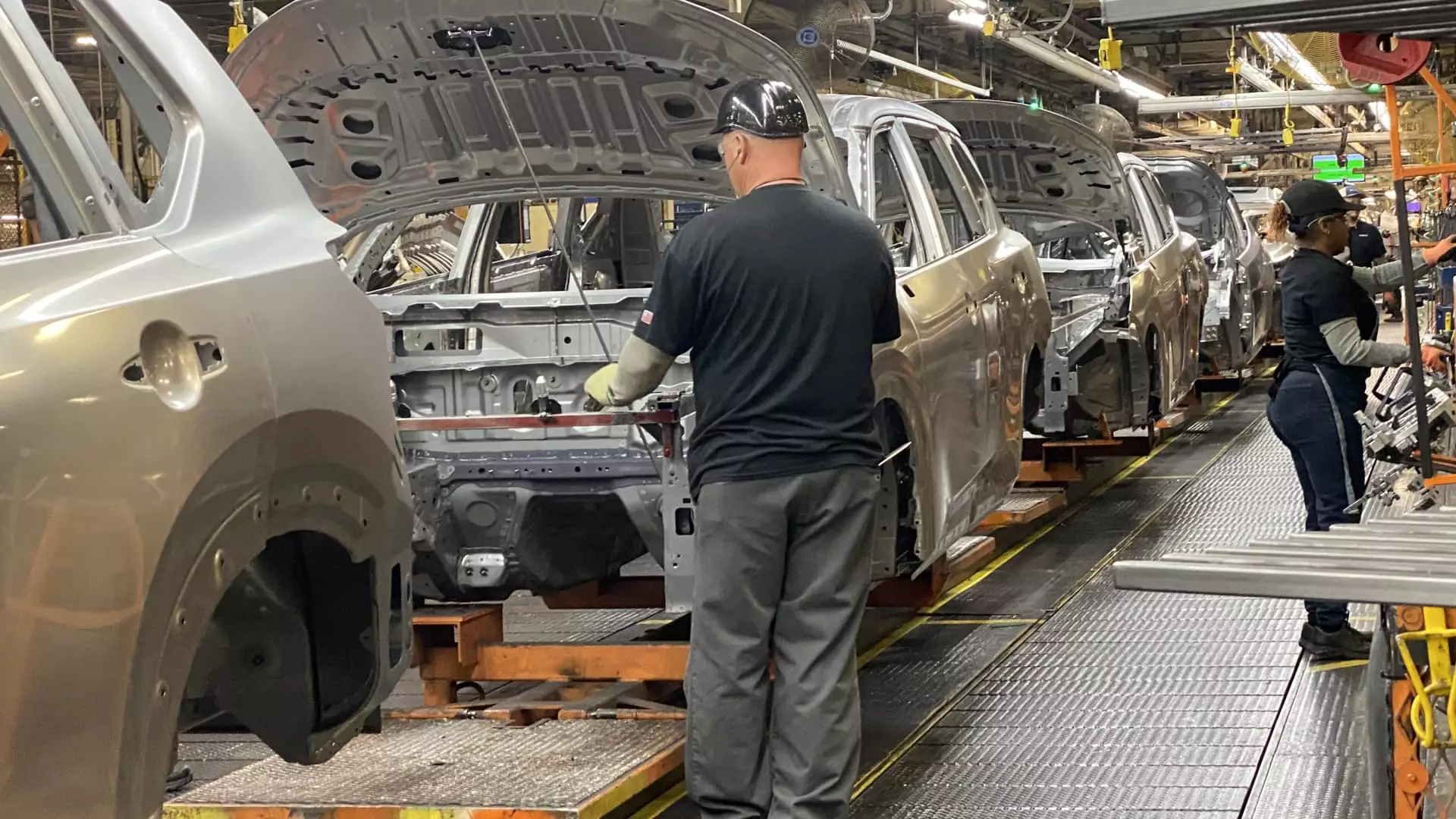The ongoing imposition of 25% tariffs on imported vehicles presents a dire scenario for the automotive industry. As the implications of these tariffs resonate through the market, analysts foresee catastrophic repercussions that stretch beyond just financial losses. This policy, which has remained in effect despite adjustments to other tariffs, threatens to disrupt the core structure of the industry, potentially leading to millions of lost vehicle sales and skyrocketing prices for consumers. While many may argue about the merits of such tariffs, it is clear that they serve as a destructive force that could reshape the automotive landscape in ways we are only beginning to comprehend.
The Weight of Tariffs: Unpacking Financial Consequences
Research suggests that these tariffs are poised to inflict over $160 billion in additional costs on the automotive sector. This figure is staggeringly high, with estimates indicating that U.S. manufacturers will bear the brunt of increases, specifically with giants like General Motors, Ford, and Stellantis incurring over $40 billion collectively. What’s more alarming is the realization that these businesses might need to pass on these costs to consumers, potentially pushing new vehicle prices up by $2,000 to $4,000 within a year. The implications for the average American family, already struggling with inflated prices across the board, can’t be overstated.
In light of this, the Center for Automotive Research has highlighted a significant concern: consumer demand is already softening. With average new vehicle prices hovering close to $50,000—a figure independent of financing costs—and vehicle loan interest rates persistently nearing historic highs, many families may find themselves entirely priced out of the market. The notion that tariffs will simply bolster domestic manufacturing is perilously simplistic; the ensuing financial strain could very well cultivate a deep-seated reluctance to purchase new vehicles altogether.
The Broader Economic Ripple Effects
When we talk about a reduction of 2 million vehicles in annual sales for the U.S. and Canadian markets, we are not merely discussing numbers stripped of consequences. The automotive industry is a crucial driver of jobs and economic health in many communities; a decline of this magnitude can curtail spending power and spiral into broader economic repercussions. As automotive expert Sam Abuelsamid pointed out, higher vehicle prices will ultimately limit discretionary spending across various sectors, intensifying the inflationary pressures consumers already face.
Other industries, from retail to manufacturing, could find themselves vulnerable to the consequences of decreased consumer spending. Tariffs might be introduced with the intention of protecting domestic jobs, but the truth is that job losses often occur in the wake of soaring production costs and dwindling sales. This complex paradox begs a crucial question: are tariffs genuinely a solution or just a half-hearted attempt to address deeper economic inequalities?
Automakers in Survival Mode: Responses to Crisis
In facing these unprecedented pressures, automakers have adopted a variety of strategies to shield themselves from devastating losses. The measures can range from short-term pricing incentives—like employee pricing deals—to significant adjustments in shipment and inventory management. For example, Ford and Stellantis have sought to create temporary remediations to lighten the burden for consumers, while companies like Jaguar Land Rover have ceased shipments altogether, effectively retreating from the U.S. market until stability returns.
However, the temporary nature of these solutions raises further concerns. As manufacturers grapple with a volatile market environment, their ability to maintain profitability in the long term will be severely tested. The industry’s instinctive reaction to crisis could stifle innovation, with companies opting for short-term fixes instead of investing in sustainable practices. As tariffs compound existing challenges—namely inflation and rising interest rates—the immediate and long-term viability of numerous automakers is on the line.
Consumer Experience: Confronting Affordability Issues
Against a backdrop of deteriorating consumer confidence, the combination of exorbitant vehicle costs and high financing rates has created a perfect storm for affordability crises. The average loan rates for new and used vehicles are at harrowing levels, with the former approaching 9.64% and the latter nearly 15%. Carmakers may have a 60-day buffer before significant increases due to tariffs set in, but the reality remains that this limping halt will only delay the inevitable price hikes that consumers will almost certainly face.
This vicious cycle raises profound questions: How much longer will consumers tolerate these price hikes before deciding to opt out of the automobile market altogether? As uncertainty shifts into a higher gear amid looming tariffs and strained household budgets, many American families may soon find themselves steering away from new car purchases, forcing manufacturers to make critical decisions about which models to produce or even continue supporting.
The stakes have never been higher for the automotive market, as the specter of tariffs continues to loom large, crafting a troubling narrative of economic uncertainty that could ripple through the economy for years to come.

